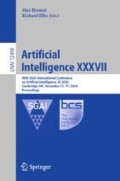Abstract
Demand Response (DR) can contribute towards the energy efficiency in buildings, which is one of the major concerns among governments, scientists, and researchers. DR programs rely on the anticipation to electric demand peaks, for which the development of short-term electric demand forecasting models may be valuable. This article presents two different variants of the KNN algorithm to predict short-term electric demand for apartments located in Madrid (Spain). On the one hand, the use of an approach based on the estimation of a Machine Learning model (KNFTS) is studied. In this method, time-related and date-related features are used as exploratory variables. On the other hand, a method based on the recognition of similar patterns in the time series (KNPTS) is analysed. The Edit Distance for Real Sequences (EDR), Root Mean Square Error (RMSE) and Dynamic Time Warping (DTW) are used to measure the accuracy of forecasts for both approaches. The experiments demonstrate that the KNPTS has a higher accuracy over the KNFTS when predicting the short-term electric demand. Furthermore, the models’ adaptation to unusual situations is showcased in this article. The impact of the COVID-19 pandemic derived in a worldwide electric demand drop due to the lockdown and other confinement measures, and the retraining method proposed for the KNPTS model has been demonstrated to be valid, as it improves the forecasting accuracy.
Access this chapter
Tax calculation will be finalised at checkout
Purchases are for personal use only
Notes
- 1.
- 2.
- 3.
- 4.
- 5.
References
Cao, X., Dai, X., Liu, J.: Building energy-consumption status worldwide and the state-of-the-art technologies for zero-energy buildings during the past decade. Energy Build. 128, 198–213 (2016)
Global Alliance for Buildings and Construction, International Energy Agency and the United Nations Environment Programme. 2019 global status report for buildings and construction: Towards a zero-emission, efficient and resilient buildings and construction sector. Technical report (2019)
Contreras, J., Asensio, M., de Quevedo, P.M., Muñoz-Delgado, G., Montoya-Bueno, S.: Demand response modeling (chap. 4). In: Contreras, J., Asensio, M., de Quevedo, P.M., Muñoz-Delgado, G., Montoya-Bueno, S. (eds.) Joint RES and Distribution Network Expansion Planning Under a Demand Response Framework, pp. 33–40. Academic Press (2016)
Warren, P.: A review of demand-side management policy in the UK. Renew. Sustain. Energy Rev. 29, 941–951 (2014)
Bartusch, C., Alvehag, K.: Further exploring the potential of residential demand response programs in electricity distribution. Appl. Energy 125, 39–59 (2014)
Adhikari, R., Agrawal, R.K.: An introductory study on time series modeling and forecasting. Ph.D. thesis (2013)
Ben Taieb, S., Bontempi, G., Atiya, A.F., Sorjamaa, A.: A review and comparison of strategies for multi-step ahead time series forecasting based on the NN5 forecasting competition. Expert Syst. Appl. 39, 7067–7083 (2012)
Martínez, F., Frías, M.P., Pérez, M.D., Rivera, A.J.: A methodology for applying k-nearest neighbor to time series forecasting. Artif. Intell. Rev. 52, 2019–2037 (2019). https://doi.org/10.1007/s10462-017-9593-z
Abu Alfeilat, H.A., et al.: Effects of distance measure choice on k-nearest neighbor classifier performance: a review. Big Data 7, 221–248 (2019)
Zheng, A., Casari, A.: Feature Engineering for Machine Learning. O’Reilly Media, Inc., Sebastopol (2018)
Bontempi, G., Ben Taieb, S., Le Borgne, Y.-A.: Machine learning strategies for time series forecasting. In: Aufaure, M.-A., Zimányi, E. (eds.) eBISS 2012. LNBIP, vol. 138, pp. 62–77. Springer, Heidelberg (2013). https://doi.org/10.1007/978-3-642-36318-4_3
Mori, U., Mendiburu, A., Lozano, J.A.: Distance measures for time series in R: the TSdist package. R J. 8, 451 (2016)
Berndt, D., Clifford, J.: Using dynamic time warping to find patterns in time series. In: Workshop on Knowledge Knowledge Discovery in Databases (1994)
Chen, L., Özsu, M.T., Oria, V.: Robust and fast similarity search for moving object trajectories. In: Proceedings of the ACM SIGMOD International Conference on Management of Data (2005)
Esnaola-Gonzalez, I., Diez, F.J., Pujic, D., Jelic, M., Tomasevic, N.: An artificial intelligent system for demand response in neighbourhoods. In: AIPES - The Workshop on Artificial Intelligence in Power and Energy Systems (Accepted, to be published)
Lusis, P., Khalilpour, K.R., Andrew, L., Liebman, A.: Short-term residential load forecasting: impact of calendar effects and forecast granularity. Appl. Energy 205, 654–669 (2017)
Widmer, G., Kubat, M.: Learning in the presence of concept drift and hidden contexts. Mach. Learn. 23(1), 69–101 (1996). https://doi.org/10.1023/A:1018046501280
Acknowledgments
This work is partly supported by the RESPOND (integrated demand REsponse Solution towards energy POsitive NeighbourhooDs) and the REACT (Renewable Energy for self-sustAinable island CommuniTies) projects, which have received funding from the European Union’s Horizon 2020 research and innovation programme under grant agreement no. 768619 and no. 824395 respectively.
Author information
Authors and Affiliations
Corresponding author
Editor information
Editors and Affiliations
Rights and permissions
Copyright information
© 2020 Springer Nature Switzerland AG
About this paper
Cite this paper
Gomez-Omella, M., Esnaola-Gonzalez, I., Ferreiro, S. (2020). Short-Term Forecasting Methodology for Energy Demand in Residential Buildings and the Impact of the COVID-19 Pandemic on Forecasts. In: Bramer, M., Ellis, R. (eds) Artificial Intelligence XXXVII. SGAI 2020. Lecture Notes in Computer Science(), vol 12498. Springer, Cham. https://doi.org/10.1007/978-3-030-63799-6_18
Download citation
DOI: https://doi.org/10.1007/978-3-030-63799-6_18
Published:
Publisher Name: Springer, Cham
Print ISBN: 978-3-030-63798-9
Online ISBN: 978-3-030-63799-6
eBook Packages: Computer ScienceComputer Science (R0)

